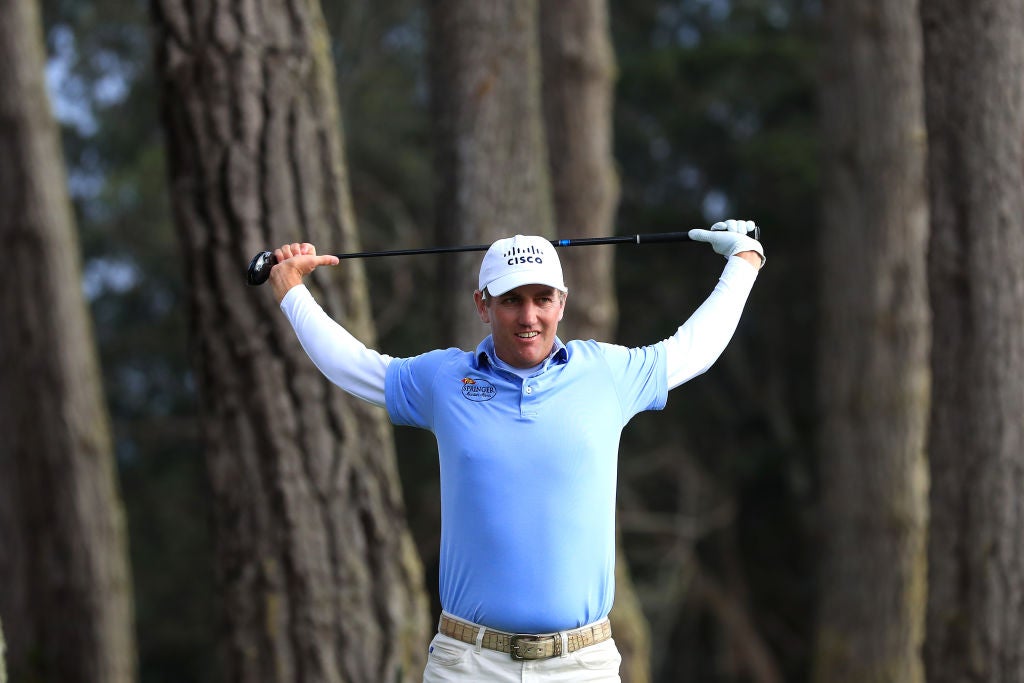It’s hard to describe, exactly, but most professional athletes have a certain aura about them. A confluence of assuredness and athleticism. You may not even know who they are, but they somehow still seize your attention.
When I look at Brendon Todd, my attention is not seized. I see a normal guy. A 35-year-old whose hair is starting to gray a little but not too much, whose golf attire is squarely mainstream — both in fit and in style — and whose 180-ish-pound build is almost exactly average for his height and age.

Brendon Todd would not stand out on the driving range of your local golf club, yet he stands out on the PGA Tour. He’s won three times in his career including twice this season, and has amassed almost $10 million in winnings along the way. Now he’s in the hunt for a major championship, and golf fans should take note, because they can learn more watching Brendon Todd play golf than an elite talent like Rory Mclroy or Tiger Woods.
It’s something of a miracle that a player like Todd can exist on the modern day PGA Tour, in that there’s no immediate or obvious explanation for it.
Todd’s clubhead speed usually hovers somewhere around 110 mph, which is about as fast a good scratch golfer. His speed is somewhere around the 80th percentile of all male golfers his age, and he’s averaging just 271 yards at the PGA Championship this week.
There’s a good chance that you, reading this, swing the golf club as fast (or faster) than Todd, and you almost certainly know someone else who does.

Distance isn’t the only thing that matters, but it provides a pretty good measure of your potential. So how is it that Todd makes it work at a PGA Tour level?
1. Hit Fairways
Todd doesn’t hit the ball far, but he does know where it’s going. He hits a fade almost exclusively off the tee, and he does it well: He ranks third on Tour in Driving Accuracy. Interestingly, the value of hitting all those fairways doesn’t result in good (or even decent) approach shot numbers. He ranks 128th in SG: Approach and 113th in Greens in Regulation. But even though he’s not rifling all his fairway approaches into the green, it does put Todd into play safely, into spots where it’s hard for him to make big numbers.
It’s a good lesson for recreational golfers everywhere: Don’t underestimate the value of simply getting your ball into play.
A whopping 156 mph ball speed from Todd on this one.
— LKD (@LukeKerrDineen) August 7, 2020
For context, Bryson has clocked 191 mph in competition pic.twitter.com/zrSq8KejJs
2. Don’t make big numbers
The true value of Todd’s reliable fade into the fairway isn’t what it helps him do (hit close approaches) but what it helps him not do, which is make bogeys and doubles.
Todd doesn’t make a bunch of birdies by the Tour standard — under three per round, which puts him 68th on Tour — but because he’s so controlled off the tee, he also makes very few bogeys (just a hair over two per round) and almost never makes doubles. He ranks 17th in both bogey avoidance and birdie-to-bogey ratio.
Golf is a game of misses, and many little ones are fine. A handful of huge ones resulting in doubles, now that’s a problem Todd knows to avoid.
3. Putt aggressively
So if you’re not hitting lots of greens yet still managing to contend and win on the PGA Tour, you must have an amazing short game, right?
Todd leads the tour in scrambling and ranks fifth in Sand Save Percentage, but the advanced metrics behind those same stats flatter to deceive slightly. He ranks 82nd in SG: Around the Green and 92nd in proximity from the sand. In short, he gets up-and-down not because he’s sticking his chips, pitches and bunker shots overly close, but instead he’s making the next putt.
Yet I wouldn’t describe Brendon Todd as a “good” putter. Todd ranks 44th in Putting Average and 33rd in SG: Putting. He’s not a bad putter, obviously; the best word to describe Todd’s putting is “aggressive.”

Todd putts his ball to make them, and he makes a lot of putts (6th overall in one-putt percentage) and also three-puts a good amount (102nd in three-putt avoidance). I doubt he cares about the latter because he knows the tradeoff, overall, is worth it.
And being aggressive on the green also has an added benefit: He can go on hot streaks when he makes a lot of putts. It’s why his .408 SG: Putting average doesn’t actually tell the an accurate story, because he very rarely performs at that level. His putting is streaky; he’s either really aggressive, makes lots of putts and registers a great score, or he’s really aggressive, three putts a lot and disappears for the week.
Either way, every putt he hits has a good, aggressive chance of going in.

We watch professional sports to see things we can’t do. To see the impossible and improbable feats of athleticism that you’ll remember for the rest of your life. That is not what Todd does, because that’s not what Todd is. He does not boast elite-level ability or athleticism, yet he stands alongside the game’s best.
And so, when he pops onto your screen, lean in and pay close attention. There’s no player in the field this week you can learn more from watching than Brendon Todd.










